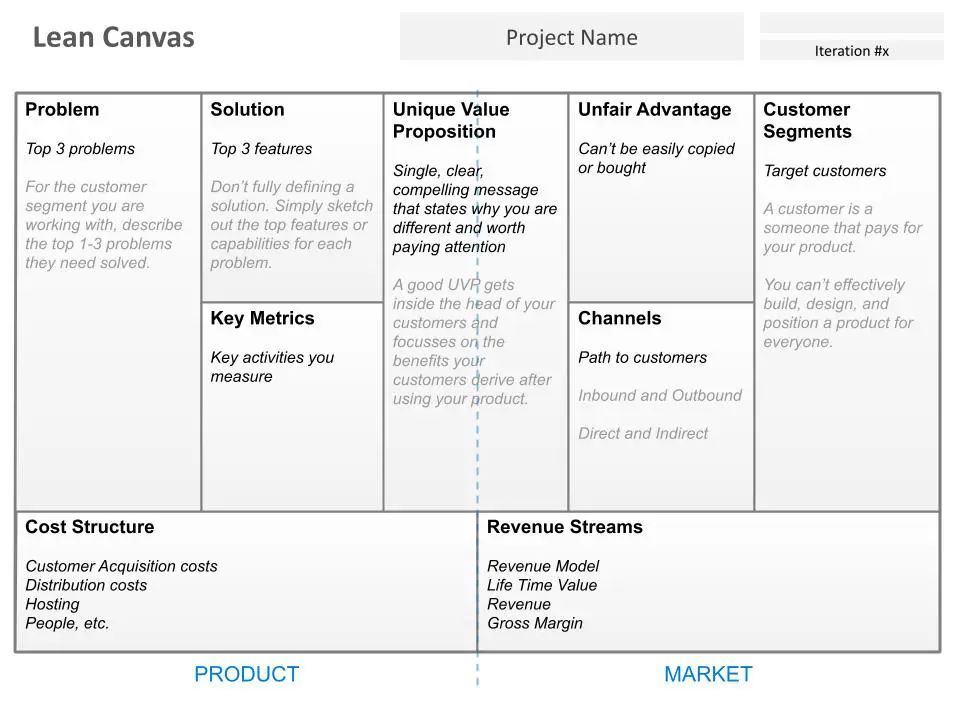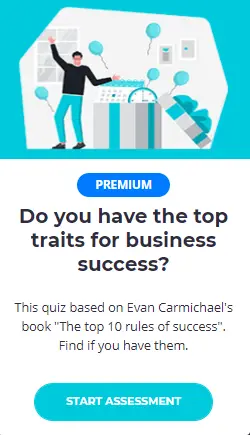How to Build a Minimum-Viable-Product (MVP)?
Every startup founder dreams of building the next game-changing product that disrupts an industry. However, the path to creating a successful product is often paved with false starts, pivots, and course corrections.
This is where the concept of the minimum viable product (MVP) comes into play – a powerful tool that enables startups to validate their ideas, gather customer feedback, and iterate rapidly without wasting precious resources.
What is a minimum viable product or MVP?
At its core, an MVP is a bare-bones version of your product that includes only the most essential features required to deliver value to your target customers. As Michael Seibel, a partner at Y Combinator, emphasizes, “Your MVP should be the first thing you can give to the very first set of users you want to target, to see if you can deliver any value at all to them.”
The beauty of an MVP lies in its simplicity and speed of execution. It allows you to quickly put your idea in front of real users, gather invaluable feedback, and make necessary adjustments before investing significant time and resources into building a fully-fledged product.
The Origins and Evolution of the MVP
The term “minimum viable product” was coined by Frank Robinson and later popularized by Eric Ries, the author of “The Lean Startup.” Ries defines an MVP as “the version of a new product that allows a team to collect the maximum amount of validated learning about customers with the least effort.”
While the concept of an MVP has its roots in the software and technology industries, it has since been adopted across various sectors, from consumer products to enterprise solutions. The underlying principle remains the same: start small, validate assumptions, and iterate based on customer feedback.
A step-by-step guide to building an MVP
The first step to building an MVP is to identify the problem you’re trying to solve. This can be done through market research or customer interviews.
Once you’ve identified the problem, you need to validate that it’s a real problem worth solving. This can be done by talking to more potential customers or conducting user testing.
Once you’ve validated the problem, you need to find a value proposition that will help solve it.
This is the core of your MVP.
It’s important to keep this simple and focused. You don’t want to try to solve too many problems with your MVP or you’ll never get it off the ground.
Once you have your value proposition, you need to identify 1-3 key features that you can build to help provide that value.
These features should be the bare minimum that you need to get your MVP off the ground.
Once you have your key features identified, it’s time to build your MVP.
This doesn’t have to be complicated or time-consuming. The goal is to get something in front of your users as quickly as possible so you can get feedback and learn from them.
Once you have your MVP, it’s time to deliver it to your users. This can be done through a variety of channels depending on your product.
Once you have it in front of your users, it’s important to get feedback so you can improve your MVP.
The cycle of building an MVP doesn’t stop once you’ve delivered it to your users.
You need to continue the cycle of build – measure – learn.
This means constantly iterating and improving your MVP based on feedback. Only by doing this can you ensure that your MVP is truly successful.

Building and Launching Your MVP
When it comes to building your MVP, speed and focus are key. Michael Seibel recommends time-boxing your spec and limiting the features to only those that can be built within a short timeframe, such as three weeks. Writing down your spec and being disciplined about cutting unnecessary features can help you stay on track and launch quickly.
Launching your MVP doesn’t have to be a grand affair. In fact, Seibel advises against the misconception that a successful launch requires a lot of fanfare and media attention. Instead, he suggests reframing the concept of a “launch” as simply getting any customers to use your product, even if it’s in a rudimentary state.
The Power of Customer Feedback and Iteration
Once you’ve launched your MVP, the real work begins: gathering customer feedback and iterating based on their insights. As Seibel emphasizes, “Hold the problem you’re solving tightly, hold the customer tightly, but hold the solution you’re building loosely.”
Customer feedback is invaluable because it can shed light on areas you may have overlooked or assumptions you made incorrectly. By remaining open to feedback and being willing to pivot or refine your solution, you increase your chances of creating a product that truly meets your customers’ needs.
Seibel distinguishes between iterating and pivoting: “Iterate means continuing to improve your solution until it actually solves the problem. Pivoting means trying to find a different problem for your solution to solve.” The key is to stay laser-focused on the core problem you’re addressing and iterate on the solution until it resonates with your target customers.
The Concept of a “Heavy MVP”
While lean MVPs are suitable for most startups, Seibel introduces the idea of a “heavy MVP” for industries with significant regulations or complex technologies, such as biotech, aerospace, or finance. In these cases, building a fully functional MVP may not be feasible in a short timeframe due to regulatory hurdles or technological constraints.
For heavy MVPs, Seibel suggests starting with a simple website that explains your product’s concept and value proposition. This allows you to engage with potential customers, gather feedback, and refine your idea before investing significant resources into developing the actual product.
The Mindset Shift: Embracing the MVP Approach
Adopting the MVP approach requires a fundamental mindset shift for many founders. It involves letting go of the desire to build the “perfect” product from the outset and embracing a more iterative, customer-centric approach.
As Seibel cautions, “Don’t fall in love with your MVP. It’s just step one in a journey.” Treating your MVP as a stepping stone, rather than the final destination, will enable you to remain agile and responsive to customer needs.
Real-world examples of a Minimum Viable Products
1. The Dropbox explainer video MVP
Drew made a video of his prototype to show people how it worked.
He released the video on Dropbox and on Hacker News in 2007. This video was good enough to get them to YCombinator.
2. Airbnb
The first Airbnb MVP was a simple website that allowed users to list their spare bedrooms or entire homes for rent. n Airbnb’s case, their MVP was:
- A basic website
- 3x airbeds
- Breakfast
Chesky and Gebbia (the founders of Airbnb) found that people from different backgrounds are willing to pay to stay in a stranger’s home.
They did this by having personal interactions with people.
This study also showed what customers wanted from the experience. This helped the company design and build its online offering.
3. Zappos
Nick Swinmurn, the founder of Zappos, loved shoes.
He had a hypothesis that people would be interested in buying shoes online.
To validate his idea, he once went to a shoe store in San Francisco and asked its owner about current inventory.
He made a deal with the store owner that whenever someone buys shoes from his website, he will come over and buy the shoes from the store.
The store owner agreed to this, and Nick started a basic website with a bunch of shoe photos taken by himself at the store.
What happened next? The website started receiving orders and helped validate the idea.
4. Twitter
Twitter was first created as a way for people to communicate with each other using SMS messages. But it soon became much more than that.
Now, Twitter is a powerful tool that can help brands succeed, and it’s also a great way to network with people all over the world.
5. Basecamp
Basecamp was created because the team at a design firm called 37signals needed a better way to manage projects.
They were frustrated with the problems they faced trying to use email to manage projects. When they couldn’t find an alternative that worked, they decided to build their own.
The first version had a message board for updates and feedback, to-do lists to keep track of things, and milestones to keep deadlines in check.
6. Groupon
We all love getting a good deal, right? Groupon did just that.
They started out by having a WordPress page with a list of customers who were interested in deals. This helped them to convert these leads into revenue.
Then they used this revenue to create their backend and voucher system.
7. Slack
The first Slack MVP was a basic chat application that allowed users to communicate with each other in real time.
8. Uber
The first Uber MVP was a simple phone app that allowed users to request and pay for rides from drivers in their area.
Uber was started in 2009 as “UberCab.”
The company began with a small number of cars and a simple app used only by the founders and their friends.
With the “invite-only” marketing tactic, the list of users grew slowly.
In July 2010, they released the product in San Francisco. Next year, they released it in New York & Paris.
9. Facebook
Facebook was launched as a social media platform to connect students from various universities.
Facebook’s founder Mark Zuckerberg was a genius programmer and built the prototype of the platform out of his dorm room.
Facebook relied heavily on the network effect — the value generated when many users join the network.
10. Buffer
Buffer was created as a tool for scheduling tweets. The founder, Joel Gascoigne, believed that this one feature was so valuable that it deserved its own application.
To prove his point, Joel built the first version of Buffer as a landing page with bullet points explaining the product and directing users to the plans and pricing page.
The next landing page showed different pricing plans.
Buffer used the data from clicks on the paid plans to see if its product was commercially feasible. T
hey then asked users to submit their email IDs so they could give them updates about the product’s release.
Buffer was first released to the public on 30th November 2010 and was well-received by all internet publications and marketers.
11. Twitch
Twitch, the popular live-streaming platform for gamers, began as Justin.tv – a single-channel online reality show featuring the life of co-founder Justin Kan. There were no video games, no chat functionality, and no high-resolution video – just a glimpse into Justin’s daily activities.
When to create an MVP?
There are a few different situations when it might be appropriate to create an MVP:
1. You’re not sure if there’s a market for your product.
2. You’re not sure if your product is solving the right problem.
3. You’re not sure if your product is technically viable.
4. You need to validate your business model.
5. You need to get feedback from your target market.
6. You need to raise investment capital.
If you find yourself in any of these situations, it might be time to create an MVP. By doing so, you can validate your product idea and make sure you’re on the right track before investing a lot of time and money into developing a full-fledged product.
Minimum Viable Product Checklist
Here’s a checklist of what you need to do to create an MVP:
1. Define your goals and objectives for the MVP. What do you want to achieve with it?
2. Identify your target market and user group. Who will you be creating the MVP for?
3. Identify the most important features of your product. What are the must-haves?
4. Create a prototype of your product. This can be as simple as a wireframe or mockup.
5. Test your MVP with your target market and user group. Get feedback and make changes accordingly.
6. Launch your MVP!
By following these steps, you can create an MVP that will help you validate your product idea and get feedback from your target market. This feedback can then be used to make necessary changes or improvements before launching a full-fledged product.
Limitations of MVP
While MVPs offer a great way to test product assumptions, certain limitations should be considered.
For example, an MVP cannot completely test whether or not a product will be successful in the market.
Additionally, if your MVP does not include all of the features of the final product, you may not be able to get an accurate sense of how customers will react to the full product.
It’s also important to note that MVPs are not suitable for all products. For example, if you’re developing a life-saving medical device, it’s probably not a good idea to launch an MVP.
In this case, it’s important to make sure that your product is safe and effective before launching it to the public.
Creating an MVP can be a great way to test your product assumptions and get feedback from customers. However, it’s important to keep in mind the limitations of MVPs and to make sure that they are suitable for your product.
Conclusion
The minimum viable product is a powerful tool that empowers startups to validate their ideas, gather customer feedback, and iterate rapidly – all while conserving precious resources. By embracing the principles of the MVP approach, founders can increase their chances of success, avoid costly missteps, and ultimately create products that truly resonate with their target customers.
Whether you’re a first-time entrepreneur or a seasoned startup veteran, the MVP approach is a valuable framework that can help you navigate the inherent uncertainties of the startup journey and increase your chances of building a successful, customer-centric product.







